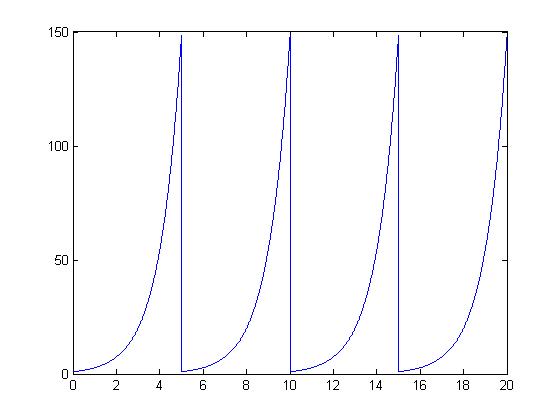(→Part B) |
(→Part B) |
||
| Line 15: | Line 15: | ||
plot(t,y) | plot(t,y) | ||
</pre> | </pre> | ||
| − | What this does is repeats the function with a period of 5, and creates 4 full periods. | + | What this does is repeats the function with a period of 5, and creates 4 full periods.<br> |
[[Image:Hw2b-rfscott_ECE301Fall2008mboutin.jpg]] | [[Image:Hw2b-rfscott_ECE301Fall2008mboutin.jpg]] | ||
Revision as of 11:18, 10 September 2008
Part A
Part B
The signal I used to transform into a periodic function was $ y=e^x $.
I did this in MATLAB using the following code:
t = [.01:.01:5]; func = exp(t); y = []; for lcv=1:4 y = [y,func]; end t = [.01:.01:20]; plot(t,y)
What this does is repeats the function with a period of 5, and creates 4 full periods.


